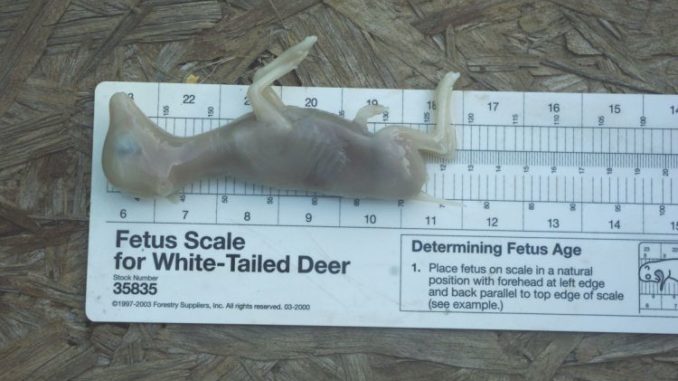
Biologists determine breeding dates based on measurements of deer embryos and fetuses using a fetal scale developed through research conducted by Quality Deer Management Association founder Joe Hamilton and other deer researchers.
This ruler measures the length of unborn deer and assigns an age in days to each one. By simply backdating from the harvest date of a specific doe, the breeding date for the doe can be determined.
It doesn’t take a rocket scientist to use the fetal scale, but LDWF biologists can help clubs interested in determining breeding dates for the deer on their lands.
It should be noted that the scale works best on lands where breeding occurs in October and November because does harvested in the late season in these early rut areas should be pregnant with embryos and fetuses that hunters can measure with the scale.
Also, Area 4 hunters who collect does in late January should find does with measurable embryos.
It takes 30 days for an embryo to become visible in the uterus of a do, so hunters in the late-rut areas of Areas 1 and 6 would not find the scale useful.
Hunters in the late-rut areas could look at ovaries and determine if does have cycled, but this is science and something with which most hunters would need help from a trained deer biologist.
Fetal scales are available from Forestry Supply in Jackson, Miss.


